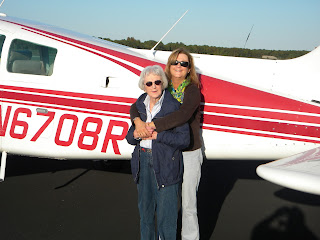cowman
Final Approach
I felt this should go in a new thread as not to get entangled in the other discussion...
I always see people grumbling about "following the magenta line" or "magenta line syndrome" and so on. I am curious as to what defines a "magenta line" pilot. Is it strictly someone who relies on GPS for navigation? Is it someone who only looks at the map page on their GPS and follows the line?
What separates this frowned apon "magenta line" navigation from a good pilot taking advantage of the best available navigation tool he has?
To me, it only makes sense to use the GPS. If Pilotage was good enough, they wouldn't have started putting NDBs around the country. If that was good enough, they wouldn't have built VORs and LORAN and probably other stuff I'm not thinking of. GPS is even more precise and reliable than that stuff was.
I navigate with my garmin 430, I use an iPad/stratus with foreflight for my charts and to verify my position and to get inflight weather if I feel the need to check. I use the page on the 430 that shows ground track and desired and try to match the numbers, I refer to the iPad for a map and current position. Along the route I try to identify what towns/airports/etc I can see out the window. I also do tune in VORs or NDBs along the route if I'm not busy with anything, just to make sure they're still working or as something to immediately fall back on should some unlikely event kill my 430, ipad, and iPhone leaving me without any GPS. I'm confident I could find my way to an airport by VOR or NDB.... I demonstrated as much on my checkride. Could I do it by pilotage? Probably... but I wouldn't want to rely on it. Seems like it would be so easy to make a mistake... heck sometimes using GPS even having reviewed the terrain on google earth the night before I have trouble spotting a field. Sometimes I see it from 20+ miles out, usually at least within 5 miles but I don't like the idea of getting where I need to go being based on "usually". This is why I consider pilotage a last resort method.
I always see people grumbling about "following the magenta line" or "magenta line syndrome" and so on. I am curious as to what defines a "magenta line" pilot. Is it strictly someone who relies on GPS for navigation? Is it someone who only looks at the map page on their GPS and follows the line?
What separates this frowned apon "magenta line" navigation from a good pilot taking advantage of the best available navigation tool he has?
To me, it only makes sense to use the GPS. If Pilotage was good enough, they wouldn't have started putting NDBs around the country. If that was good enough, they wouldn't have built VORs and LORAN and probably other stuff I'm not thinking of. GPS is even more precise and reliable than that stuff was.
I navigate with my garmin 430, I use an iPad/stratus with foreflight for my charts and to verify my position and to get inflight weather if I feel the need to check. I use the page on the 430 that shows ground track and desired and try to match the numbers, I refer to the iPad for a map and current position. Along the route I try to identify what towns/airports/etc I can see out the window. I also do tune in VORs or NDBs along the route if I'm not busy with anything, just to make sure they're still working or as something to immediately fall back on should some unlikely event kill my 430, ipad, and iPhone leaving me without any GPS. I'm confident I could find my way to an airport by VOR or NDB.... I demonstrated as much on my checkride. Could I do it by pilotage? Probably... but I wouldn't want to rely on it. Seems like it would be so easy to make a mistake... heck sometimes using GPS even having reviewed the terrain on google earth the night before I have trouble spotting a field. Sometimes I see it from 20+ miles out, usually at least within 5 miles but I don't like the idea of getting where I need to go being based on "usually". This is why I consider pilotage a last resort method.






